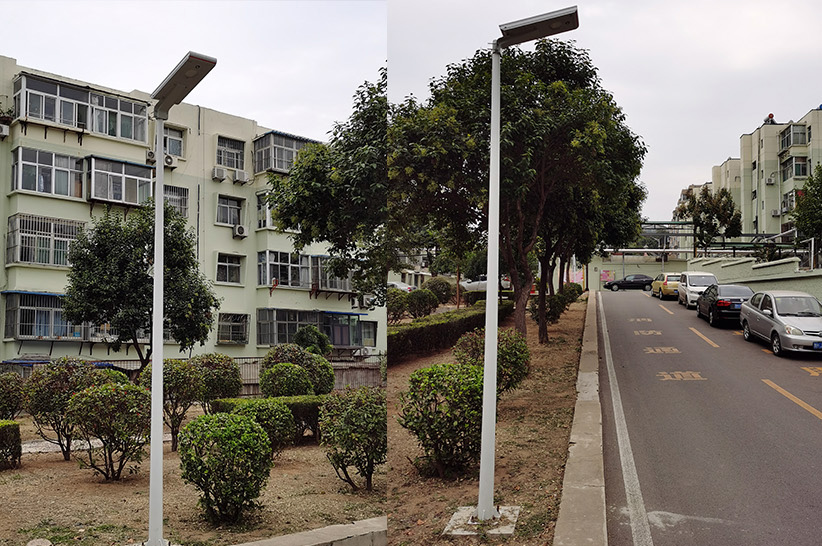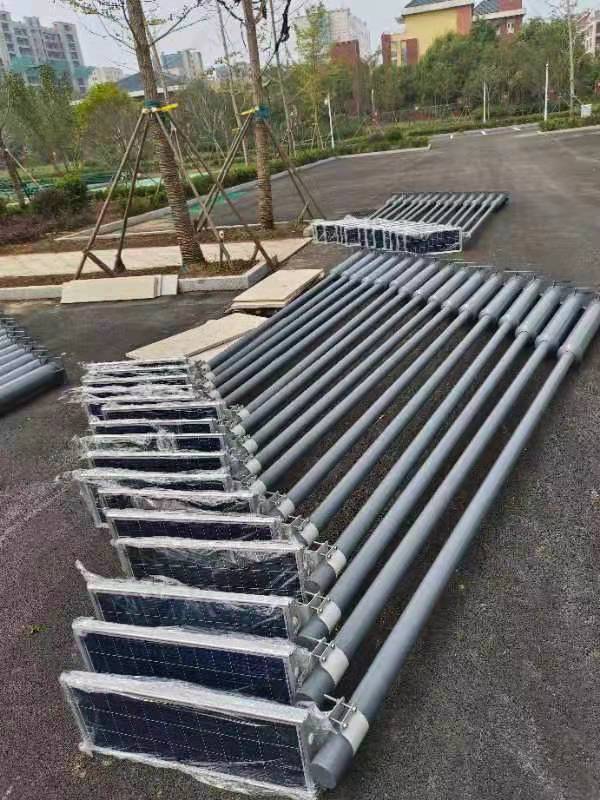Controlled by solar controller, it supplies power to solar light source LED energy-saving lamp
Use a diode string between the battery and the battery board to prevent reverse charging.

- The solar panel in the sky receives solar radiation and generates electric energy in the form of chemical energy, which is stored in the battery pack.
-
2. At night, it is controlled by the solar controller to supply power to the solar lamp light source LED energy-saving lamp to make it glow.
3. When the brightness is higher than the set value during the day, the solar controller will control the output off, the solar energy lamp will stop emitting light, and the battery will continue to charge automatically.

4. The main role of solar cells is to generate electricity.
5. The mainstream of the power generation market is crystalline silicon solar cells and thin film solar cells, both of which have advantages and disadvantages.
6. Crystalline silicon solar cells have relatively low equipment costs, but high consumption and cell costs, but also high photoelectric conversion efficiency. It is suitable for generating electricity in outdoor sunlight.
Connecting a solar panel to an LED light to make it work requires a complete solar power system (not just direct connection between the two), as solar panels produce unstable DC power that needs regulation, storage, and control to match the LED’s power requirements. Below is a step-by-step guide to the system composition, connection principles, and specific wiring methods, suitable for both small-scale (e.g., home garden lights) and medium-scale (e.g., street lamps) applications.
Solar panels generate electricity, but they cannot directly power LEDs—you need 4 key components to form a functional loop. Missing any part will cause the LED to fail (e.g., flickering, burnout, or no light).
Many beginners try to connect the solar panel directly to the LED, but this leads to problems:
- Unstable voltage/current: Solar panel output depends on sunlight (e.g., 18V open-circuit voltage in strong light, near 0V at dusk). LEDs need stable voltage (e.g., 12V), so direct connection causes flickering or burnout.
- No energy storage: The LED will only light when the sun is shining (no light at night).
- Battery damage risk: Without a charge controller, the battery will overcharge (swell/explode) or over-discharge (permanent damage).
We take a common 12V system (e.g., 10W solar panel + 12V 7Ah battery + 12V 5W LED) as an example. The wiring order follows the "Solar Panel → Charge Controller → Battery → LED" loop (current flows in one direction, do not reverse polarities).



